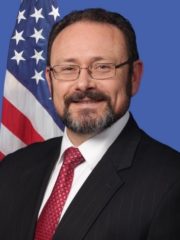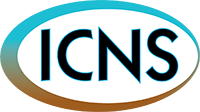April 5, 2022
Opening Keynote
“CNS and Spectrum Developments in European and International Standardization”
Anna Von Groote, Director General, EUROCAE
Anna von Groote joined the EUROCAE Secretariat in 2011 and was appointed EUROCAE Director General in February 2022. Before joining EUROCAE, she worked at the European Committee for Standardization (CEN) since 2006, where she assumed responsibilities for the organization’s work program in different sectors. In her role as program manager at CEN, she was responsible amongst others for the aerospace and air traffic management sector.
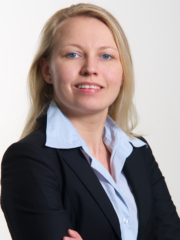
Plenary I: Global Harmonization
Description
Global Harmonization and effectively integrating new technologies and business needs in an ever-evolving world: How do we globally and regionally integrate new technologies, different business needs, and non-traditional aviation actors into aviation operations and ATM services? What are the latest plans of the various states, ANSPs, industry members, and other organizations to integrate new technologies and collaborate with each other to promote global interoperability and address airspace user needs? What are the key challenges we must address and opportunities we should capitalize upon to support the growing demands of the flying public and enable new business opportunities? In particular, what is the vision and enabling strategies to further take advantage of a digitized world and evolve the way information is generated, shared, used, and disseminated to make real-time ATM business decisions—within and across regions, across different decision nodes (e.g., flight deck, airspace user ground-based systems, ANSP ground systems), and across different actors (ANSPs, airspace users, industry).
Co-chairs
Paul Bosman, Head of Infrastructure Division, Network Manager Directorate, EUROCONTROL
Paul Bosman has been with EUROONTROL for nearly 30 years, working in many different technical and managerial positions in different locations. He is currently the head of the Network Manager – Infrastructure Division. He is responsible for planning, deploying, and monitoring European infrastructure and aiming to digitise the SES European Sky through activities such as CNS, information management, AI and overall resilience (cyber, interference), as well managing major pan-European common services such as ARTAS/SDDS/SASS-C, EAD, NewPENS and air-ground datalink common procurement.
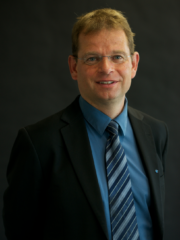
Rob Hunt, Director, PMO Integrated Services & Analysis; FAA
Robert (Rob) Hunt was permanently installed as the director, Integrated Services and Analysis, on September 13, 2020, in the FAA’s Program Management Organization (PMO). In this role, he is responsible for leading a directorate charged with overseeing and enabling key enterprise level functions across the FAA’s PMO, including integrated resource management, acquisition support, program health management, and planning, analysis and integration of PMO programs into the National Airspace System (NAS). With over 900 employees and a multi-billion-dollar annual budget, the PMO is responsible for developing business solutions, procuring technologies, and implementing programs that enable NextGen benefits and sustainment of NAS and mission support systems for airspace users.
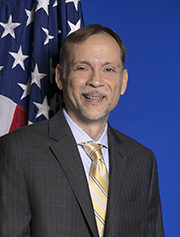
Panel Members
In order of presentation
Diana Liang, Enterprise Portfolio Manager, FAA, “Vision of the NAS Future”
Diana Liang works in the FAA NextGen organization, Ms. Liang has successfully provided direction and oversight on the development and fielding of many of the FAA’s NextGen programs and enabling technologies. In each of her previous roles she has promoted NextGen CNS programs. As acting chief for the NAS Architecture, she helped to manage the FAA’s overall plan for the transition to and implementation of the NextGen systems including the SWIM and Datacom Programs. Ms. Liang, as Enterprise Portfolio Manager, helps to prioritize all NextGen research and development activities with the FAA from a funding and schedule perspective to help the NAS recognize many of the planned performance improvements. This has included strong support for enterprise CNS research. Ms. Liang is the U.S. nominated panel member to the ICAO Information Management Panel (IMP) leading the development of SWIM, information services guidance, and air-ground SWIM.
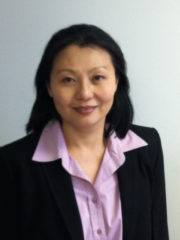
Marouan Chida, Head of Digital Transformation & Innovation, SESAR Joint undertaking, “European ATM Strategy”
Marouan CHIDA is the head of Digital Transformation & Innovation in SESAR, the European ATM modernisation program. He oversees the strategic research and is leading the digitalization of aviation together with its related technological innovations (ATM/UTM, CNS, avionics, autonomy, artificial intelligence, connectivity). He is experienced in advanced ATM concepts, avionics and ground systems, involved in technology and architecture development across the SESAR program. Before joining the SJU, Marouan worked for AIRBU.S., where he led ATM & avionics development teams.
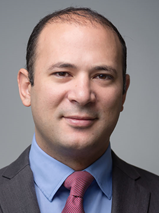
Steve Bradford, Chief Scientist for Architecture and NextGen Development, FAA, “U.S. Communication Strategy”
Steven W. Bradford is the Federal Aviation Administration’s (FAA) chief scientific and technical advisor for architecture and Next Generation Air Transportation System (NextGen) Development. He is the chairman of the Technical Review Board, which monitors technical decisions, related investments, and the enterprise architecture. Mr. Bradford works with elements of the FAA to develop midterm plans and five-year budget requests to implement NextGen. He is the FAA’s lead for the FAA/NASA Research Transition Team process that supports collaboration between the FAA and NAS on ATM -related activities. He also has a leading role in NextGen’s international engagement activities with SESAR Joint Undertaking, and he has led several co-operative international efforts with EUROCONTROL. He was a member of the International Civil Aviation Organization’s (ICAO) technical team that authored the Global Air Navigation Plan, the past U.S. panel member to the ICAO Air Traffic Management Requirements and Performance Panel, and the chairman of the Global Air Navigation Plan Study Group responsible for managing all updates to that plan.

Jacky Pouzet, Head of Communication and Frequency Coordination at EUROCONTROL, “Future Communications Infrastructure (FCI) European Planning”
Jacky Pouzet has been head of ATM Communication and Frequency Coordination at EUROCONTROL since 2011. Before that he was the ATM Communication domain manager. He has an Industrial background (aircraft manufacturer) has a Master of Science from École d’Ingénieurs en Chimie et Sciences du Numérique (CPE), Lyon, France. He is a member of the EUROCONTROL ICAO Communication Panel and chairman of the EUROCONTROL Communication Steering Group. Major recent achievements: radio frequency function, network security and mobility, IP protocol, VoIP, PENS, 8.33, spectrum policy, future communication technology, datalink.

Andrew Onken, Communications Architect, Collins Aerospace, “Connected Ecosystems”
Andrew Onken is responsible for technical strategy for the Connected Aviation Solutions unit of Collins Aerospace. He has over 30 years of aviation experience including 25 years of aviation communication experience including VDL, IPS and ATN OSI standardization, network development and implementation, and CPDLC standardization. He is now engaged with the digitalization of aviation communication to prepare to launch the next generation of digital solutions delivering user-centric products enabling a more seamless, secure, and sustainable aviation industry.
Gareth Lawton, Product Manager of ATC Solutions, SITA, “Enabling Collaboration for Optimisation”
For more than 20 years, Gareth has been delivering solutions for leading organizations with the aviation industry. This has included ANSPs, airports, AUs, ground handlers, established industry players, aviation start-ups and now a CSP. The solutions Gareth has worked on have been varied, including new ATC functions, ATFCM tools, aircraft boarding methods, datalink implementations, trajectory-based operations, flexible use of airspace tools, post-operational analysis, FOD detection, controller workload prediction, airfield collaboration tools and many others. This background provides him with a good overview of the industry and allows him to empathize with many of aviation’s stakeholders. Gareth is now helping SITA to develop new CNS services to support the future needs of aviation.

Plenary II: Aviation Spectrum: How does aviation navigate through a constantly changing spectrum environment?
Description
With multiple external spectrum issues impacting aviation systems and operations, the panel will explore what this means for aviation manufacturers, operators, and regulators with respect to future CNS systems. This will include what other changes might we expect, and how aviation might change or adapt to these circumstances.
Chair
Andrew Roy, Director of Engineering Services Aviation Spectrum Resources (ASRI)
Andrew Roy is the director of Engineering Services at Aviation Spectrum Resources, Inc. (ASRI), acting as the focal point for U.S. airlines and other commercial aviation operators on spectrum engineering and regulatory considerations. He is vice chairman of the ICAO Frequency Spectrum Management Panel and is a member of the U.S. Department of Commerce’s Spectrum Management Advisory Committee. Roy is a veteran of the UK Royal Air Force with a background in RF battlespace management.
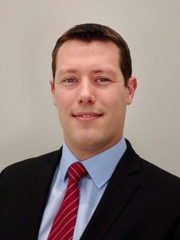
Panel Members
In order of presentation
Claude Pichavant, Executive Expert Communication, Navigation, Surveillance, Cockpit and Platforms, Airbus, “How to build CNS systems for the future RF environment”
Claude Pichavant has an extensive career in the field of civil airborne communications and surveillance systems with over 35 years’ experience on all Airbus aircraft models. Claude has been actively involved in the international standards for commercial aviation, representing Airbus at the ARINC-AEEC-SAE (Aeronautical Radio, Incorporated- Airlines Electronic Engineering Committee- Society of Automotive Engineers), as well as at EUROCAE and RTCA (Radio Technical Commission for Aeronautics). Since 2007, his representation of the air transport industry has enabled him to further develop solid working relationships with Single European Sky ATM Research ( SESAR), the International Civil Aviation Organization (ICAO), and the International Telecommunications Union (ITU) Radio Communication Sector through participation to two World Radio Conferences. Claude is also an active member and contributor of the International Coordinating Council of Aerospace Industries Associations (ICCAIA) and has thus contributed to the 2015 High-Level Safety Conference on the Global Flight Tracking topic, and still contributing to the ICAO Frequency Spectrum Management Panel (FSMP) and to the Global Aeronautical Distress and Safety System GADSS Advisory Group as ICCAIA advisor.
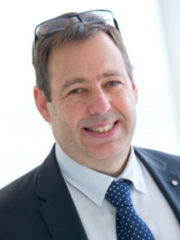
Loftur Jónasson, Chief CNSS (CNS and Spectrum), ICAO, “How to Regulate CNS Systems for the Future RF Environment”
Loftur Jónasson is chief of CNSS (CNS & Spectrum) as well as secretary of the Frequency Spectrum Management Panel (FSMP) of ICAO’s Air Navigation Commission. Loftur joined ICAO in 2007, major responsibilities being Standards and Recommended Practices (SARPs) for aeronautical Communication, Navigation and Surveillance (CNS) systems, and aeronautical frequency spectrum management as well as representation of ICAO and aeronautical interests at the ITU World Radiocommunication Conferences and other international radio regulatory fora. As an electrical engineer (telecommunications), since 1992 he has worked mainly in the field of aeronautical and maritime radio and telecommunications. His background, in addition to aeronautical communications systems, includes a variety of maritime tasks, including being the project lead for the development and rollout of one of the world’s first marine vessel tracking systems, long before this became an international standard, at that time tracking a fleet of over 2000 ships through automatic position reporting by means of multiple routes, including VHF and satellite.
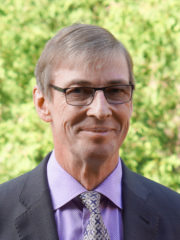
Noppadol Pringvanich, Head ATM Engineering & Aviation Radio Spectrum, IATA, “How to Operate Aircraft in the Future RF Environment”
Noppadol Pringvanich is the global head of Air Traffic Management Engineering and Aviation Radio Spectrum for International Air Transport Association (IATA). He is responsible for all developments of IATA’s global policy/strategy and airlines positions relating to aviation frequency spectrum and all aircraft avionics and related infrastructure. Noppadol is the co-chair of ICAO Communications Panel and has served as IATA-nominated panel member for numerous ICAO technical panels including Navigation, Surveillance and Frequency Spectrum Management. He also headed IATA delegation in global International Telecommunication Union (ITU) conferences and meetings. Prior to IATA, Noppadol served as the chief of ICAO Asia Pacific Regional Sub-Office in Beijing where he managed strategic directions and led all daily operations of the ICAO office. Noppadol also served as director of Airspace and Flight Procedure Department at AEROTHAI, Thailand, where he was responsible for all airspace improvement projects, both domestical and international, and the corporate master planning of the ANSP’s communication, navigation, surveillance and air traffic management infrastructures. Noppadol received his Master of Science in electrical engineering from Stanford University, U.S.A.
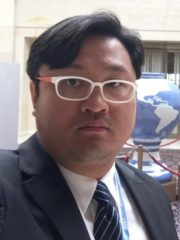
Sponsors and Exhibitors Reception
Evening Keynote
“Certifying Advanced Technology Products”
Dr. Michael Romanowski, Director, Policy & Innovation Division of FAA
Dr. Michael Romanowski is the Federal Aviation Administration’s (FAA) director of Policy & Innovation in the Aircraft Certification (AIR) Service. In this role, he provides executive direction in support of aerospace innovation, by seeking out the best solutions for the organization that will drive outcomes, anticipating key changes in the market, and mobilizing teams around the change to develop a clear pathway to certification for all aerospace products. He also provides direction in the development and maintenance of AIR regulations, guidance and directives, research, and development activities for AIR, and maintains and manages the Chief Scientific and Technical Advisor program, as well as fleet safety studies and evaluation of overall fleet safety needs.
